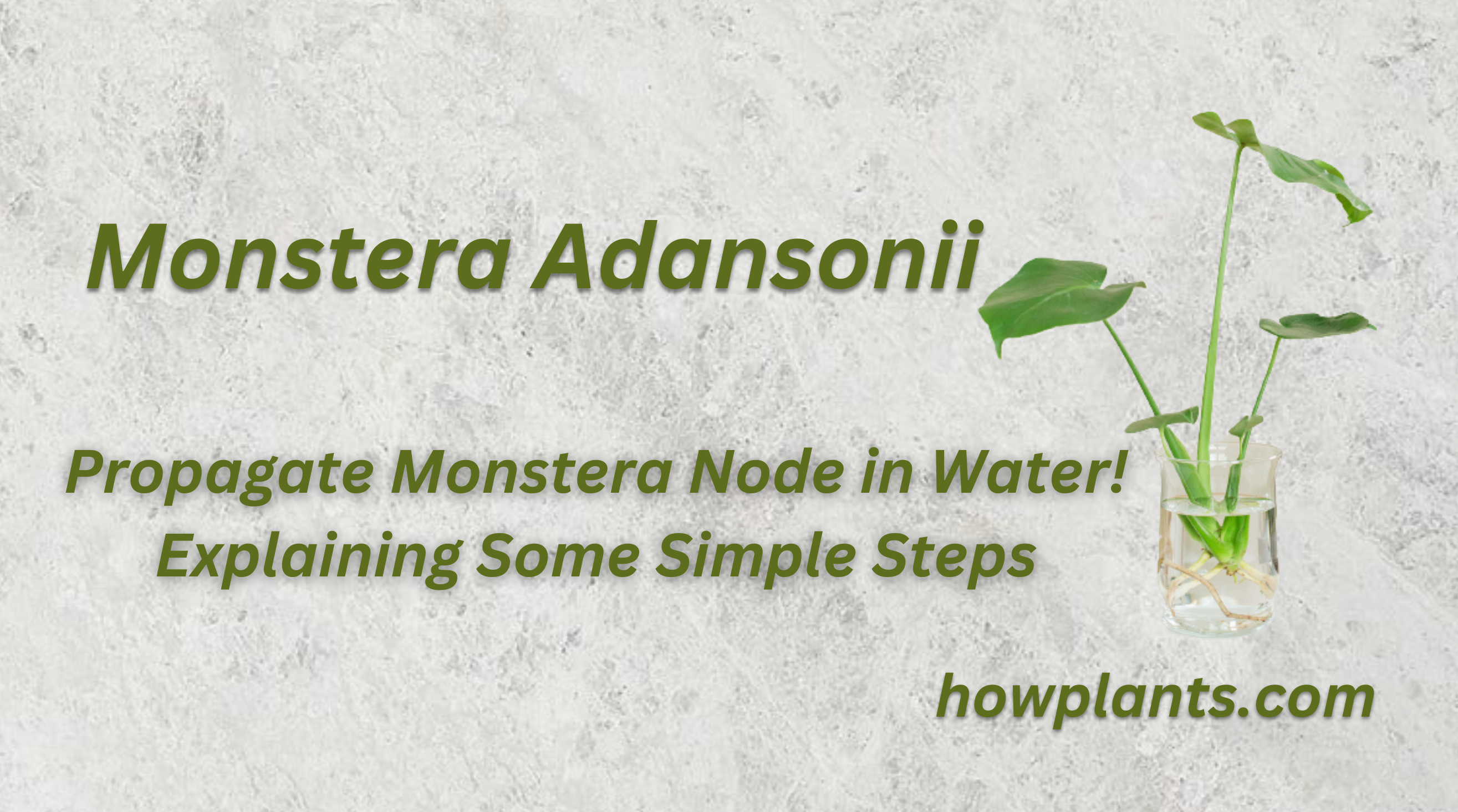Monstera are beautiful, tropical plants that will add luscious greens and create a unique look in any room. But how do you go about propagating these plants for more growth? In this article you will come to know the importance of propagation and procedure explaining how to root Monstera nodes in water, how to put aerial roots of it in water?, how long they can survive in water and when to shift them in soil and how this shifting can be done in a perfect way. With the right tips and tricks, your Monstera propagation is sure to be successful.
Monstera plants are one of the most popular houseplants, with their large glossy leaves and unique split leaves. These hardy tropical plants can tolerate low light conditions and don’t need frequent watering; making them ideal for busy people with lifestyle constraints. Furthermore, because of their fast-growing habit and large leaves, Monstera plants can easily take over a living space if left unchecked – so it’s important to learn how to properly propagate them!They can propagate easily using water and cuttings, making them a great choice for those looking to grow their own Monstera plant. Propagating a Monstera in water is simple and easy to do, requiring just a few items that you likely already have in your home.
Requirements for Monstera Propagation
To begin propagating your monstera plant in water, start by gathering your supplies: scissors or pruning shears, clean glass jars or vases filled with fresh filtered water, rooting hormone powder (optional), and of course the Monstera cutting itself. Make sure that the cutting has at least two nodes – these are small bumps located along the length of the stem where new roots will form – before snipping it off from the parent plant.
Basic Steps to Propagate Monstera Leaves
Here are four simple steps to propagate your Monstera plant in water.
Finding Monstera propagation nodes bearing aerial roots or leaves
Nodes on a Monstera can be found on the main stem of the plant, usually at an interval of about 10 – 15 cm apart. They look like small bumps or scabs on the stem, and if you touch them they will feel firm and slightly raised. Depending on which point in its life cycle your Monstera is in, these nodes may bear aerial roots as well as new leaves emerging from them. When looking after your Monstera it is important to know where these nodes are located so you can provide them with proper support such as a trellis or stake when necessary. First, use sharp pruners or cutting shears to trim away the excess length of stem that contains the node you want to remove. Make sure you cut just above a leaf node—this will ensure that your stem is strong enough for future growth. Use rubbing alcohol on a cotton swab and gently rub it around each side of the node you want to remove. Cut off the stem just below a node (the area where leaves or aerial roots grow). Make sure that there are at least two nodes on the cutting.

Transfer Monstera cutting into Water Jar having rooting hormone
Then, dip the end of the cutting into the rooting hormone for several weeks until new growth appears. During this period, make sure to keep an eye on the health of your cutting by changing out the water every few days and ensuring that no debris has built up around it.
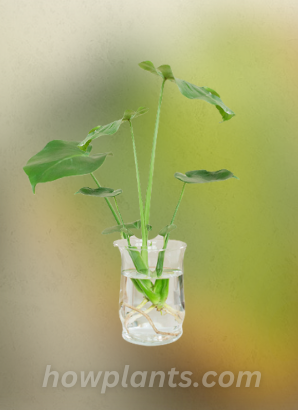
One important part of caring for a Monstera is to know when to change the water in the jar that it’s planted in. When placing a Monstera into the jar, you should fill it with enough water so that nodes of it will remain dipped into water. Use the vase that has a narrow opening and is wider from the bottom so that new roots can get enough space to grow properly.
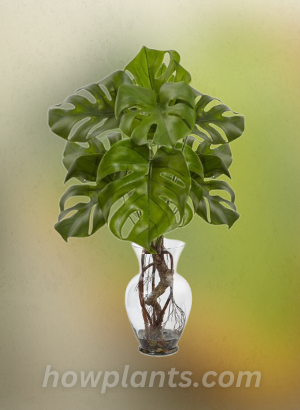
Whenever you change water, examine the plant if there is any rotting root there?
Monstera Roots develops from Nodes
When the roots start to develop from nodes on the stems, it can be hard to know what to do. Fortunately, with a few simple steps, you can ensure that your Monstera plant stays healthy and vibrant for years to come. Try to replace water regularly with clean water. Keanly examine its roots and if you feel any unhealthy areas in the plant remove it. Examine the roots and if you observe that any part of the root is changing its color and they are becoming a little bit slimy and mushy these are the signs of root rot. Quickly cutoff the rotten part, clean the roots properly and sanitize them and change their water. As it grows its roots try to shift the plant in the larger jar that allows the growth of roots.
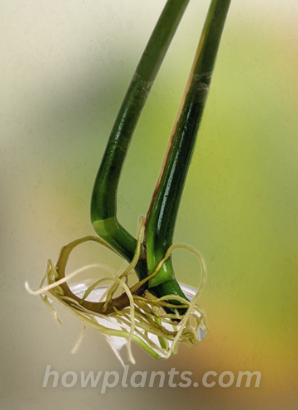
Transfer the Monstera from Water Jar to soil
Moving a rooted Monstera plant from its water jar to soil can be a tricky process that requires delicacy. But fear not! With the right knowledge and careful execution, you can ensure your Monstera plant is healthy and thriving in its new environment. Here are some steps to help you make the transition as smooth as possible.
Before transferring your Monstera plant, prepare its soil by mixing equal parts peat moss, perlite or vermiculite and potting soil in a large container. Start by saturating the mixture with water until it’s evenly moist throughout; this will allow the roots of your plant to penetrate through the soil more easily. Next, remove any excess roots from the jar before gently taking out your Monstera cuttings with clean hands and placing them into their new home – making sure there’s adequate space for growth between each one.
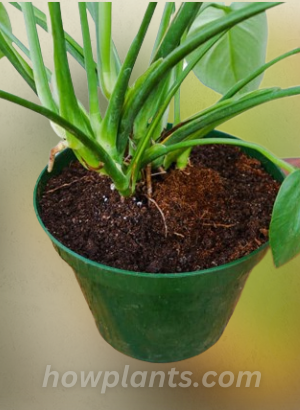
Monitor the Monstera Plant
For a week your plant will look a little bit dull but it will become healthy and start producing new leaves. As the soil environment is quite new for these plants, take extra care to help the plant to become used to this new environment. As the roots were used to live in water all the time, soil should be kept moist. Do not water the plant too much because it will lead to root rot.
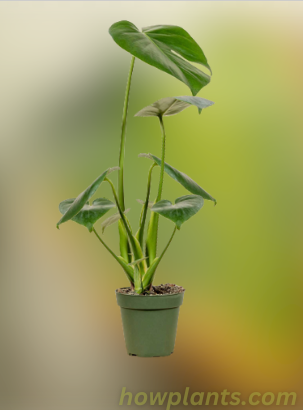
Do new Monstera Propagate from Leaf?
The answer is simply “NO”. You can propagate a new Monstera plant from a leaf. Nodes are essential to propagate the plant.
What if the Monstera Plant is not Producing Nodes?
If your Monstera is not producing new nodes it means whether it is a young plant or maybe it is not getting enough sunlight. So place it in sunlight and give it the warmer temperature, that will help it to grow nodes.
Summary
Monstera plants are fast growing plants and you can increase the number of these plants through propagating them in water. These plants are not fragile and keep alive in jars for years if you look after them properly. You can earn money by selling them out and also give them as a favor to your friends. They increase the beauty of your house and also purifies the air. It is a healthy plant.
